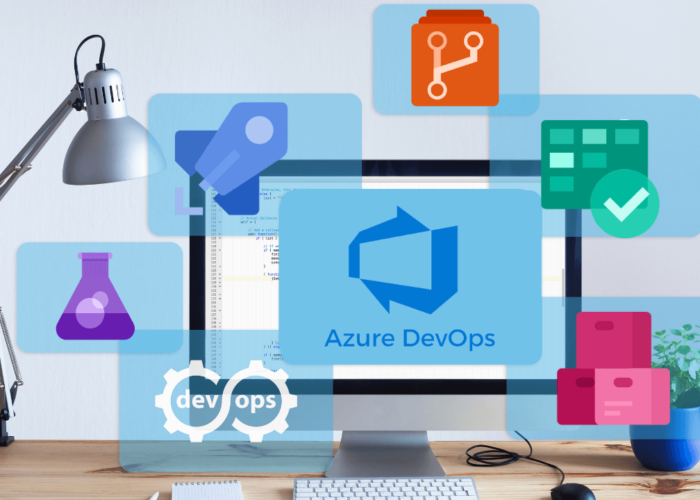Among the leading cloud service providers, Microsoft Azure stands out as a comprehensive platform offering a wide array of services to businesses of all sizes. Migrating on-premises infrastructure to Azure is a strategic decision that can have numerous benefits, but it requires careful planning and execution to ensure a smooth transition. In this article, we’ll explore the key aspects of how to migrate to Azure and how to do it successfully.
What is Azure migration?
Azure migration involves the process of moving applications, data, and workloads from on-premises environments to the Azure cloud platform. This migration enables businesses to utilize Azure’s robust infrastructure, services, and global network to improve performance, scalability, and agility while reducing operational costs.
4 reasons to migrate to Azure as your primary cloud provider
In the this section we will talk about 4 reasons why to migrate to Azure as your primer cloud provider:
- Scalability: Azure offers virtually limitless scalability, allowing businesses to scale resources up or down based on demand. This elasticity ensures optimal performance and cost-efficiency, especially during peak periods or sudden spikes in workload.
- Global reach: With data centers located in regions across the globe, Azure provides reach and accessibility. This global footprint enables businesses to deploy applications closer to their users, improving user experience.
- Comprehensive services: Azure offers a comprehensive suite of services, including compute, storage, networking, databases, analytics, machine learning, and more. These services help businesses to innovate rapidly and drive digital transformation.
- Security and compliance: Azure adheres to high quality security standards and compliance certifications, providing businesses with peace of mind regarding data protection and regulatory compliance. Azure’s robust security features, including encryption, threat detection, and identity management, help safeguard sensitive information from cyber threats and unauthorized access.
- Microsoft Integration: If you’re already immersed in the world of Microsoft’s tools and products, Azure presents itself as a cost-effective pathway with swift and effortless assimilation into your current infrastructure. Once you’re onboard the Azure cloud, exclusive advantages and privileges await your exploitation. Features such as the Azure Hybrid Benefit and Azure Reserved Virtual Machine Instances not only trim your initial costs but also provide flexibility for fine-tuning your utilization until it perfectly aligns with your requirements.
This article might be of your interest: Azure Integration Services: 10 reasons why you should choose it (chakray.com)
What to consider before migrating to Azure cloud?
Before embarking on the Azure migration journey, businesses must consider several factors to ensure a successful outcome:
- Assessment and planning: Conduct a thorough assessment of existing infrastructure, applications, and workloads to identify dependencies, performance requirements, and potential migration challenges. Develop a comprehensive migration plan outlining timelines, milestones, and resource allocation.
- Resource optimization: Optimize resources and applications for the cloud environment to maximize performance and cost-efficiency. Consider refactoring legacy applications, implementing cloud-native architectures, and leveraging managed services offered by Azure.
- Data migration strategy: Develop a data migration strategy to transfer data securely and efficiently to Azure. Evaluate data transfer methods, such as online migration, offline migration, or hybrid approaches, based on data volume, latency requirements, and network bandwidth.
How much does migration to Azure cloud cost?
The cost of migrating to Azure cloud varies depending on factors such as the size and complexity of the environment, data volume, migration approach, and selected Azure services. While Azure provides cost estimation tools and pricing calculators to help businesses forecast migration costs, it’s essential to consider additional expenses such as data transfer fees, storage costs, and ongoing management and support expenses.
Here you can have more information that might be helpful: Azure pricing licensing
Migrate to Azure: challenges that companies may face
Despite its numerous benefits, migrating to Azure cloud poses several challenges that businesses may encounter:
Legacy systems and applications
Legacy systems and applications may not be compatible with Azure cloud or require significant refactoring and modernization efforts to function optimally in the cloud environment.
Hybrid cloud considerations
Integrating on-premises systems with Azure services can be complex due to differences in architectures, protocols, and technologies. Additionally, ensuring data consistency and synchronization between on-premises and Azure environments can be challenging.
Data consistency and integrity
Ensuring data consistency and integrity during the migration process is crucial to prevent data loss, corruption, or inconsistency across different environments.
Performance
Addressing performance and latency issues, especially for latency-sensitive applications, requires careful network optimization and configuration to minimize latency and maximize throughput.
Disaster recovery and business continuity
Meeting Recovery Point Objectives (RPO) and Recovery Time Objectives (RTO) for critical workloads can be challenging in Azure environments. Additionally, maintaining disaster recovery capabilities while managing costs and ensuring data consistency and integrity pose significant challenges.
Skill gap and training
Migrating to Azure cloud requires specialized skills and expertise in cloud technologies, infrastructure management, and DevOps practices. Businesses may need to invest in training and upskilling their workforce or partner with experienced cloud service providers to overcome skill gaps and ensure a successful migration.
Azure Migration: strategy, assessment, and planning
Strategy
Crafting a robust strategy involves thorough consideration of various facets of the migration journey. Within your strategy, key elements to address include:
- Budget allocation
- Availability of skilled personnel (internally or externally)
- Assessment of Azure resource availability (such as Azure Virtual Machines, Azure Virtual Network resources, Network security groups, databases, etc.)
- Establishing a realistic timeline with achievable milestones.
Assessment
The assessment phase serves as a crucial checkpoint to evaluate the suitability of applications for migration and to gauge potential organizational benefits. Critical components of the assessment encompass:
- Analysis of current infrastructure and applications
- Identification of potential challenges or roadblocks during transition
- Identification of applications incompatible with Azure
- Identification of applications necessitating modifications for seamless cloud integration. Microsoft’s Virtual Machine Readiness Assessment tool offers insights into current infrastructure readiness, generating reports on workload transferability and potential migration hurdles.
Planning
This phase entails strategic decision-making to ensure a smooth transition. Key actions include:
- Prioritizing migration of tools and applications based on factors like importance, business priority, and complexity.
- Crafting a detailed roadmap outlining the entire migration process.
- Deliberating on data storage options and backup strategies to mitigate potential risks.
- Establishing clear expectations with stakeholders to delineate their roles and responsibilities in the migration journey.
By meticulously executing these steps in strategy formulation, assessment, and planning, organizations can navigate Azure migration challenges adeptly, ensuring a perfect transition to the cloud environment.
Chakray: A reliable partner for Azure migration
Chakray is a Microsoft Azure partner focused on Azure Integration Services. Our partnership with the company gives us the ability to utilise Azure to solve common IT concerns faced by organisations today. Our partnership with Microsoft allows us to supply our customers with experienced Azure integration professionals in the UK, Spain, Canada, LATAM, Africa and APAC regions. We help our clients realise the full potential of their investment in Azure by utilising its integration tools such as Azure API Management and Azure Logic Apps, off-the-shelf connectors, and extensible workflows in a comprehensive manner.
Conclusion to migrate to Azure
Migrating on-premises infrastructure to Azure cloud is a strategic initiative that offers businesses the opportunity to improve agility, scalability, and innovation while reducing operational costs. By carefully assessing requirements, planning effectively, and addressing challenges proactively, businesses can successfully migrate to Azure and discover the full potential of cloud computing to drive digital transformation and achieve their business objectives. With Azure’s comprehensive services, global reach, and strong security posture, businesses can accelerate innovation, improve efficiency, and stay ahead in today’s competitive marketplace.
For those considering the implementation of Azure and seeking expert guidance, Chakray stands ready to assist. Our team of experienced professionals can provide tailored solutions to ensure a great experience. Contact Chakray today, and let one of our experts guide you through the process, and discover the full potential of it for your business.
Contact our team and discover the cutting-edge technologies that will empower your business.

Talk to our experts!






